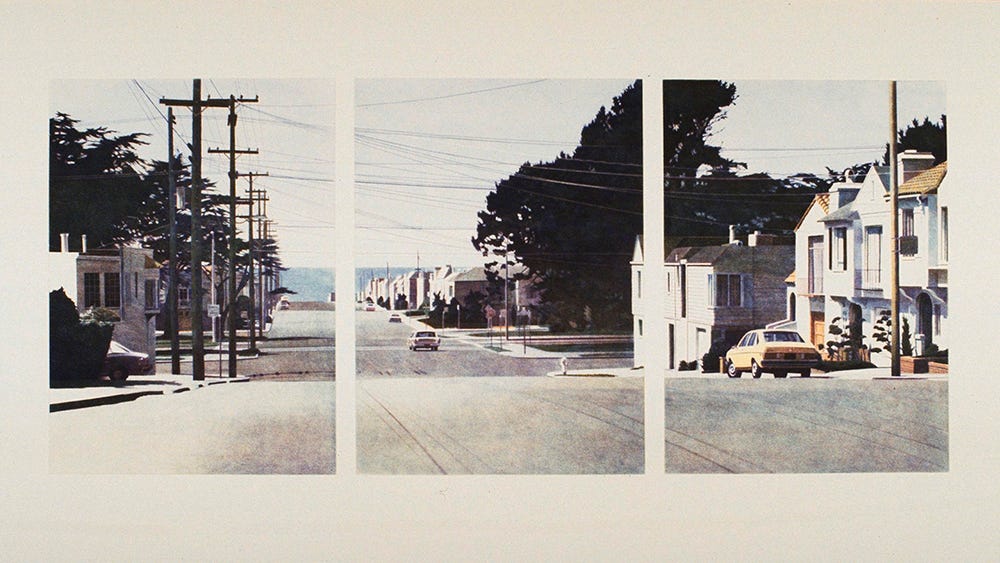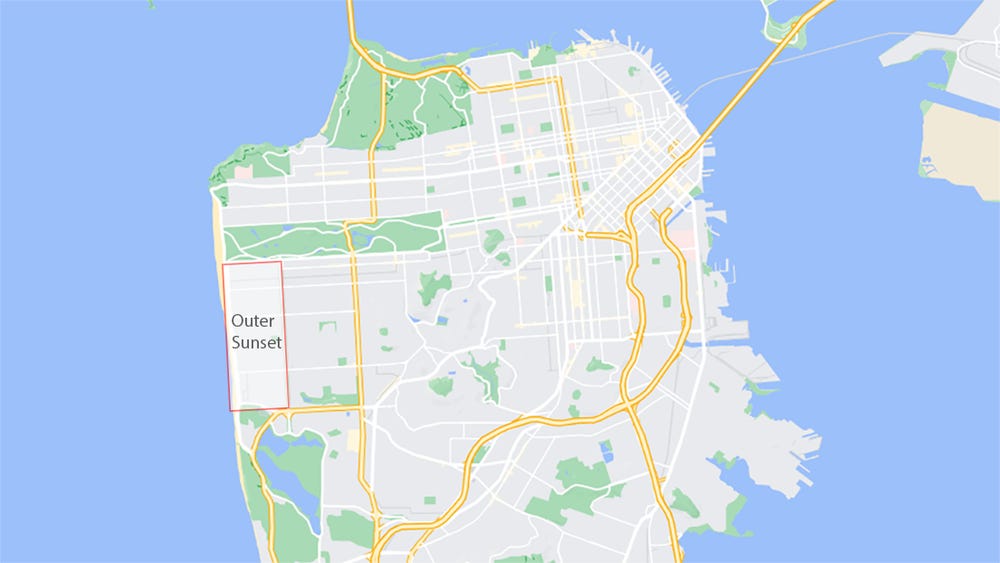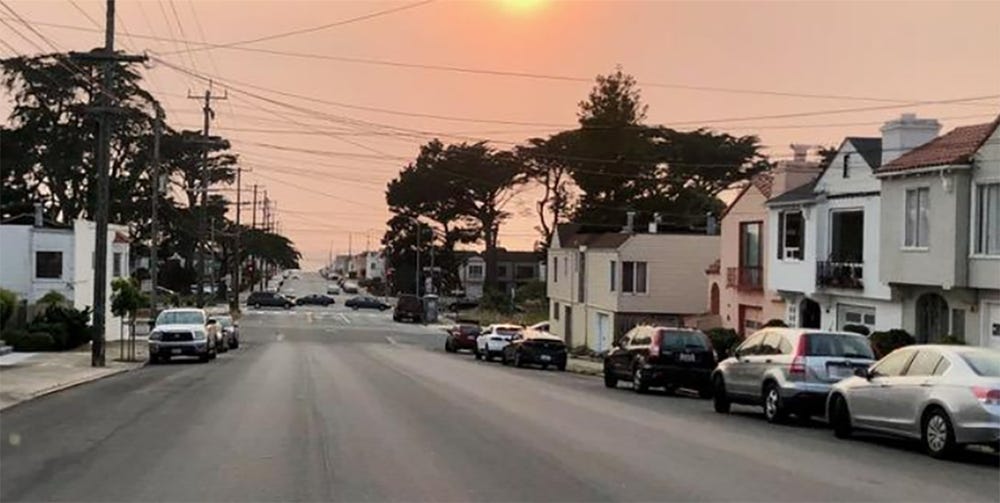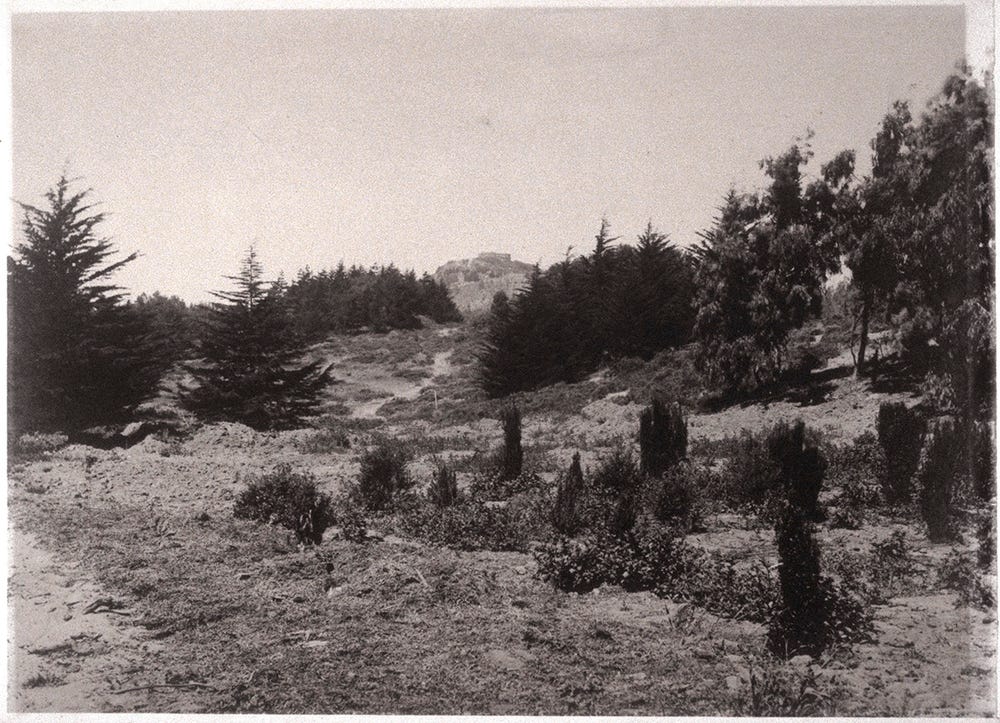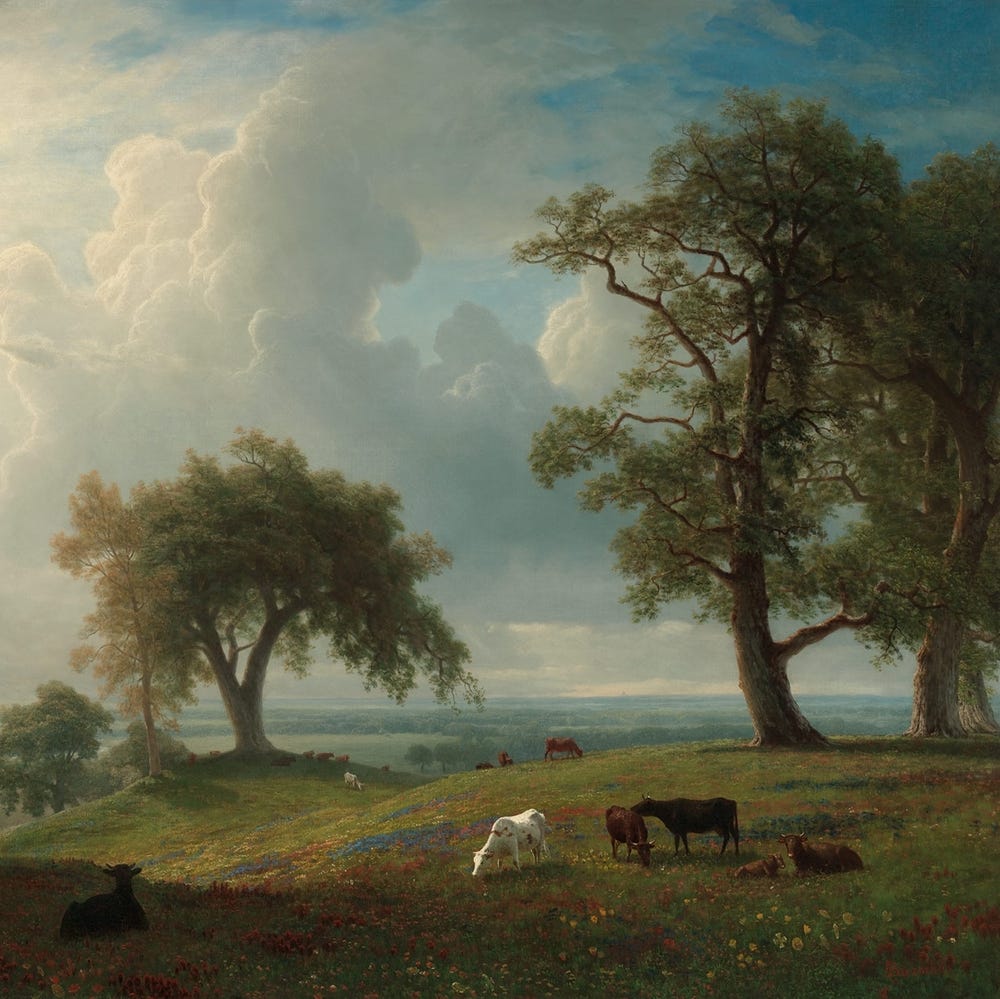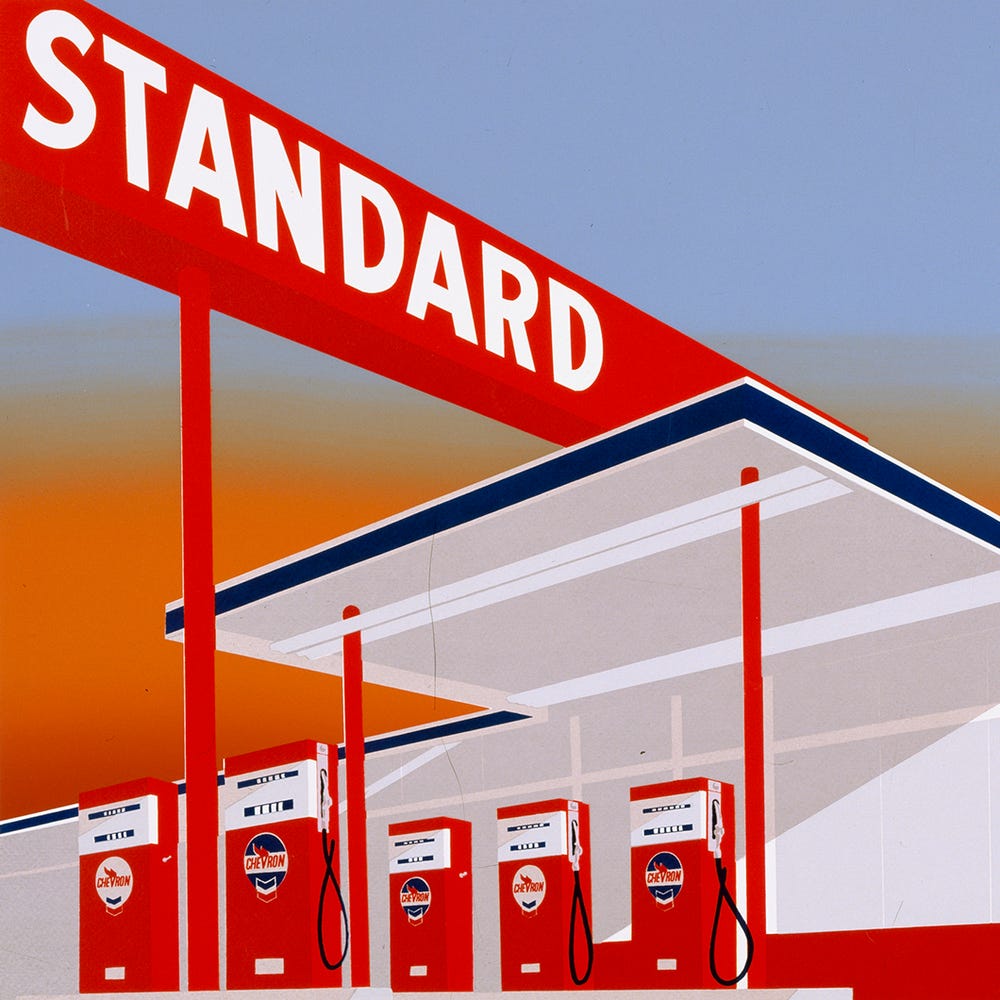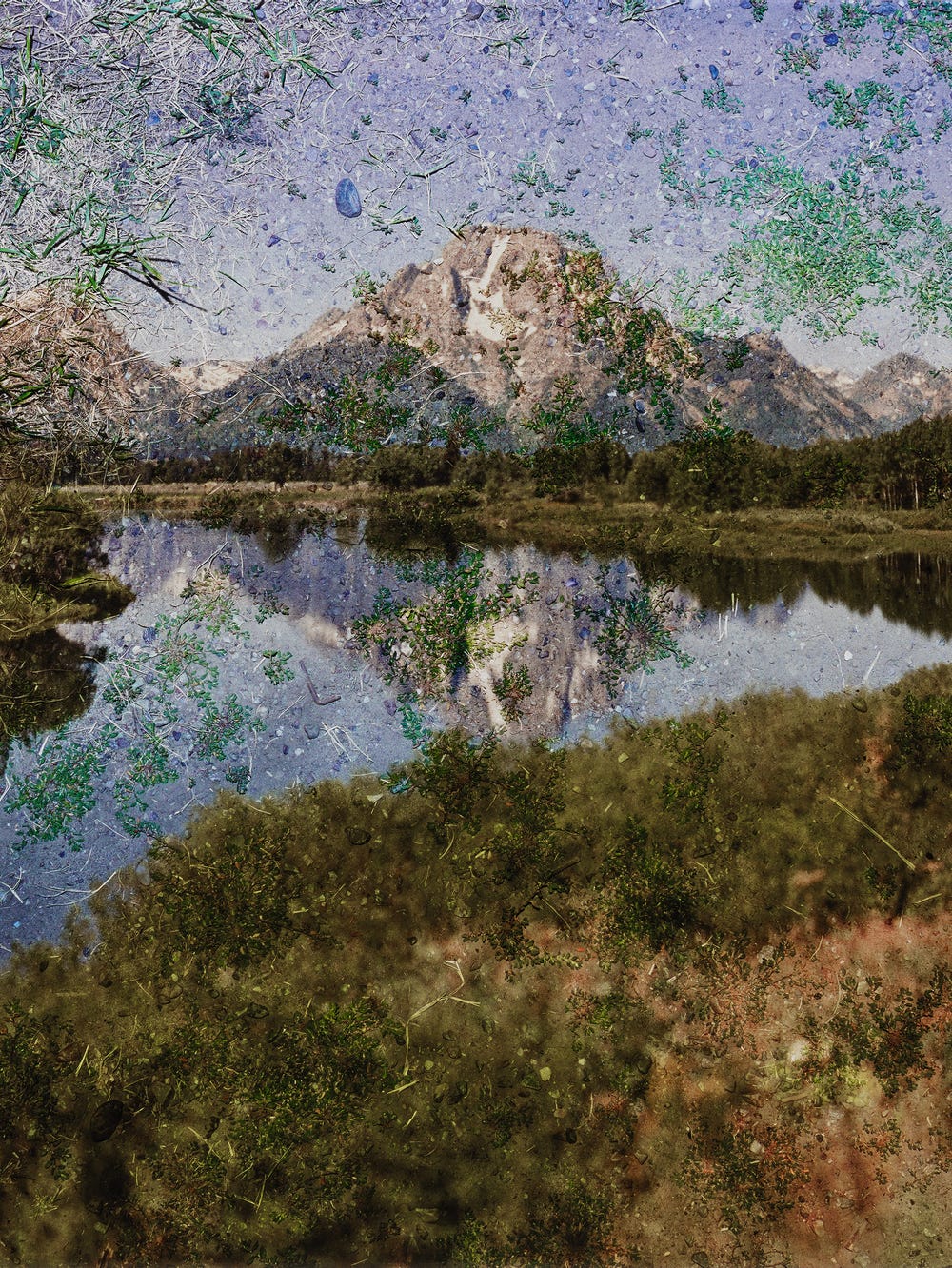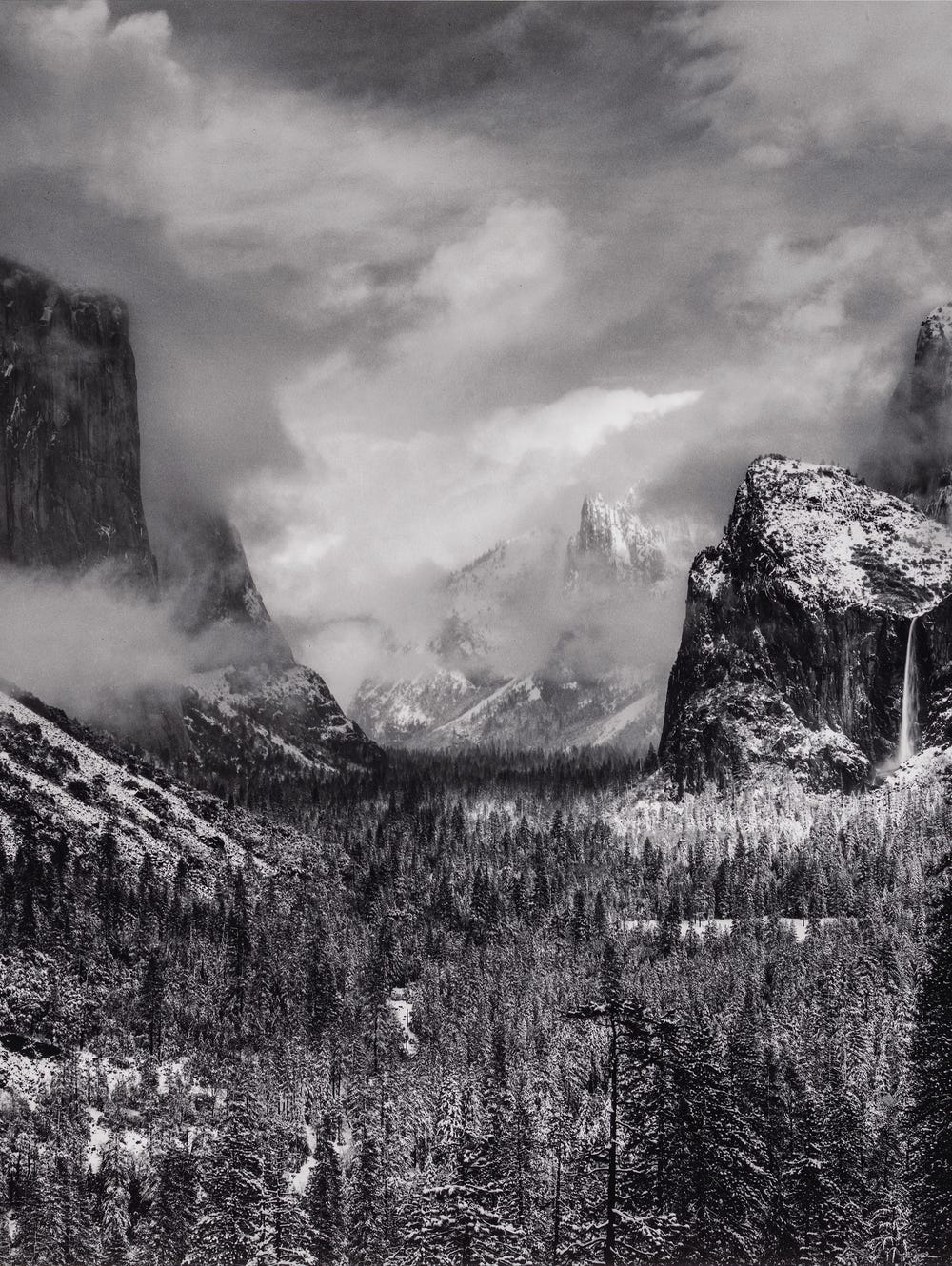Robert Bechtle, Sunset Intersection (detail), 1983. Color Soft-ground Etching, 32 1/4 x 59 3/4 in. Fine Arts Museums of San Francisco, Crown Point Press Archive, Gift of Crown Point Press, 1991.28.1484. © Robert Bechtle and Crown Point Press
Robert Bechtle: Bay Area Artist
The Outer Sunset streets depicted in Robert Bechtle’s print Sunset Intersection (1983) present an opportunity to discuss an altered San Francisco landscape. It is a landscape that has been shaped over the twentieth century by human development and the city’s expansion to its western edges.
Robert Bechtle was no stranger to the Outer Sunset (an area bordered by Lincoln Way on the north, Sunset Boulevard to the east, Sloat Boulevard to the south, and Ocean Beach to the west). He was born in San Francisco and lived most of his life in the Bay Area, graduating with a BA and an MFA from the California College of Arts and Crafts in Oakland. From 1956 to 1966 he taught at UC Berkeley, and then UC Davis, until 1968, returning to teach at San Francisco State University until his retirement, thirty years later, in 1999. He lived in the Potrero Hill neighborhood of San Francisco for over thirty years.
Map of San Francisco noting the Outer Sunset. Map data ©2021 Google. Outer Sunset boundary modified by FAMSF
Bechtle worked in a style called “photorealism,” an American art movement that began in the late 1960s. He was recognized as one of the finest of its first-generation artists. Photorealist artists use a photograph or slide to gather information about an image, which they then transfer to canvas or paper using a projector or a grid technique. The resulting painting or drawing is a precise copy of the photo image with very little indication of technique such as brush strokes or drawn lines. Bechtle made Sunset Intersection at Crown Point Press, a fine art publishing press in San Francisco. (To see how he worked creating a similar print in the studio there, see the fascinating short video here.)
Bechtle worked from his own photographs of his local environs. He described them as the “contemporary California and middle-class surroundings” that he would observe on walks or drives near his home or office. He was not interested in portraying San Francisco’s bay views or dramatic hills but was instead an interested observer, showing the details of everyday San Francisco neighborhood life that are often overlooked even by the city’s residents. As an artist, he was captivated by the quality of light in San Francisco where, even in nondescript neighborhoods, the sunlight (or the lack of it) can produce effects of vibrant or faded color. Bechtle seemed to gravitate to Bay Area suburbia for many of his images, and his choice of the Outer Sunset for Sunset Intersection is no doubt purposeful. Its distance from San Francisco’s downtown and the abundance of single-family homes identifies the district as the city’s most suburban.
Bechtle’s Outer Sunset and the Neighborhood Today
Debra Evans, a longtime resident of the Outer Sunset and a recently retired FAMSF paper conservator (and now member of the Fine Arts Museums), joined me in looking at Sunset Intersection, Bechtle’s 1983 portrait of her neighborhood. Debbie’s first reactions centered around the ways that the area had changed since 1983. She noted immediately that there are fewer parked cars in Bechtle’s image, whereas today there are more cars to be found lining the streets in the densely populated neighborhood.
The site of Bechtle’s print, Sunset Boulevard and Santiago Street from 35th Avenue, seen today in this recent photo taken on one of San Francisco’s “poor air-quality” days. Image courtesy of Brad and Debra Evans
Also unchanged, she noticed, are the unattractive rows of utility poles that still line the long blocks, punctuating the concrete- and asphalt-filled sameness of the streets. The uniformity of Outer Sunset architecture, mostly low-rise single-family homes, is another feature tied to the area’s history. Debbie reminded me that the builder of many of these small homes was Henry Doelger, who built hundreds of them in the Outer Sunset beginning in the 1920s. (See the web article on Doelger’s impact on the area here.) Apart from a few architectural flourishes, their stucco facades are indistinguishable from one another, adding to the neighborhood’s blandness. Although today, Debbie said, many new residents are painting their homes with bright colors and trim, replacing the pale pastel-painted exteriors that typified the district for years. Nevertheless, unattractive rows of utility poles still line the long blocks.
Bechtle’s street view also emphasizes the flatness of the Outer Sunset landscape, an unaltered profile of the neighborhood’s original landscape of sand dunes and scrub. A photograph of the dunes is in the museums’ collection, capturing the site of the 1894 Midwinter Fair that is today the museum concourse in Golden Gate Park.
Isaiah West Taber, The Site before Breaking Ground, 1894. Gelatin silver print, 46.2 x 62.4 cm. Fine Arts Museums of San Francisco, California Midwinter International Exposition, through M.H. deYoung, 2462
The sand on which much of the Outer Sunset is built is still evident in the soil of the small front yards and large backyards of the neighborhood, a scourge for gardeners and perhaps the reason that front-yard landscaping is practically nonexistent in most of the area. It is a difficult and challenging environment for many plant species, but Debbie notes that succulents are easy to grow and the Outer Sunset now boasts some of the best succulent gardens in the city. Succulents are a landscape feature that she notes have begun to appear in more and more Outer Sunset front yards.
We spoke about the patch of blue ocean seen at the end of the street in Bechtle’s print, a sight that Debbie noted is a beacon for local residents. It isn’t always blue, she remarked, given that the Outer Sunset is known as the foggiest neighborhood in San Francisco. The ocean often appears to be a steely gray, reflecting the overcast skies above, adding yet another layer to already dreary streets. In fact, the ocean generates the gloomy skies as a layer of fog that in turn produces a cooling effect not only for the neighborhood but also for the rest of the city and surrounding Bay Area. It is probably the most important aspect of the area’s ecology, remaining unchanged over time and continuing to shape the way people live in the Outer Sunset, reminding us of the important ecology in which we all live in the Bay Area.
Text by Karin Breuer, Curator in Charge, Achenbach Foundation for Graphic Arts, Fine Arts Museums of San Francisco.
Learn more about our collection of works of art on paper at the Achenbach Foundation for Graphic Arts.
